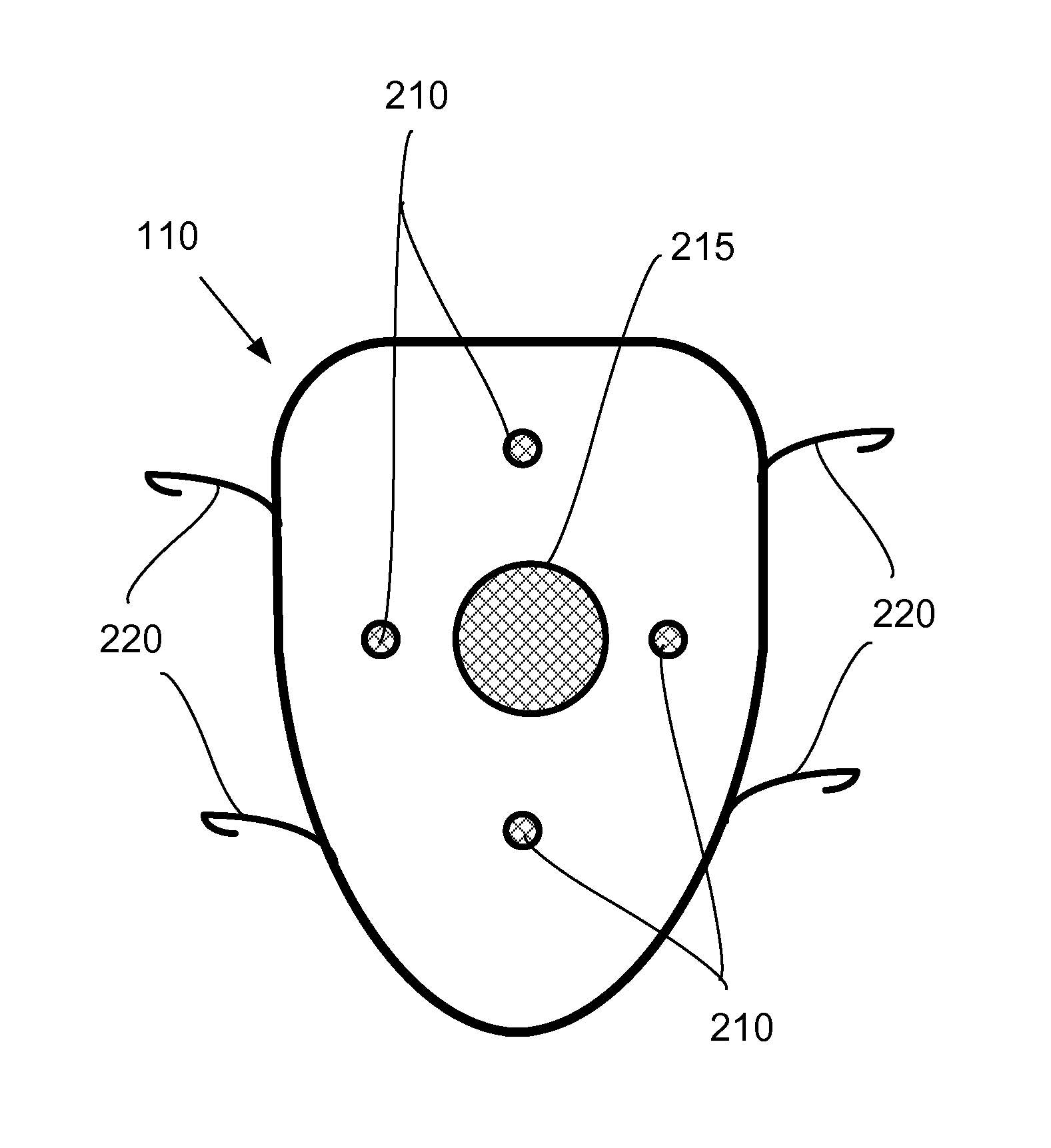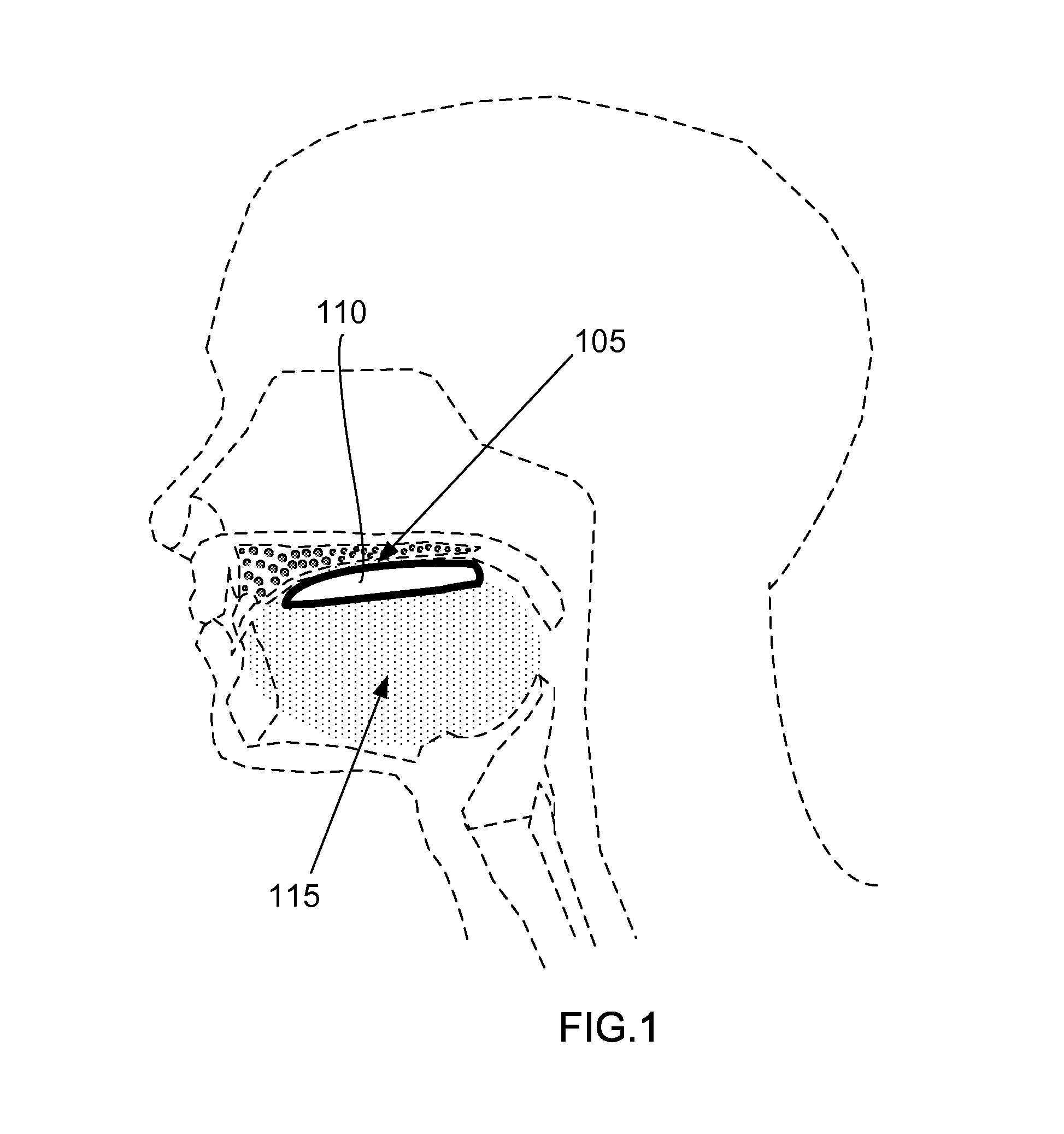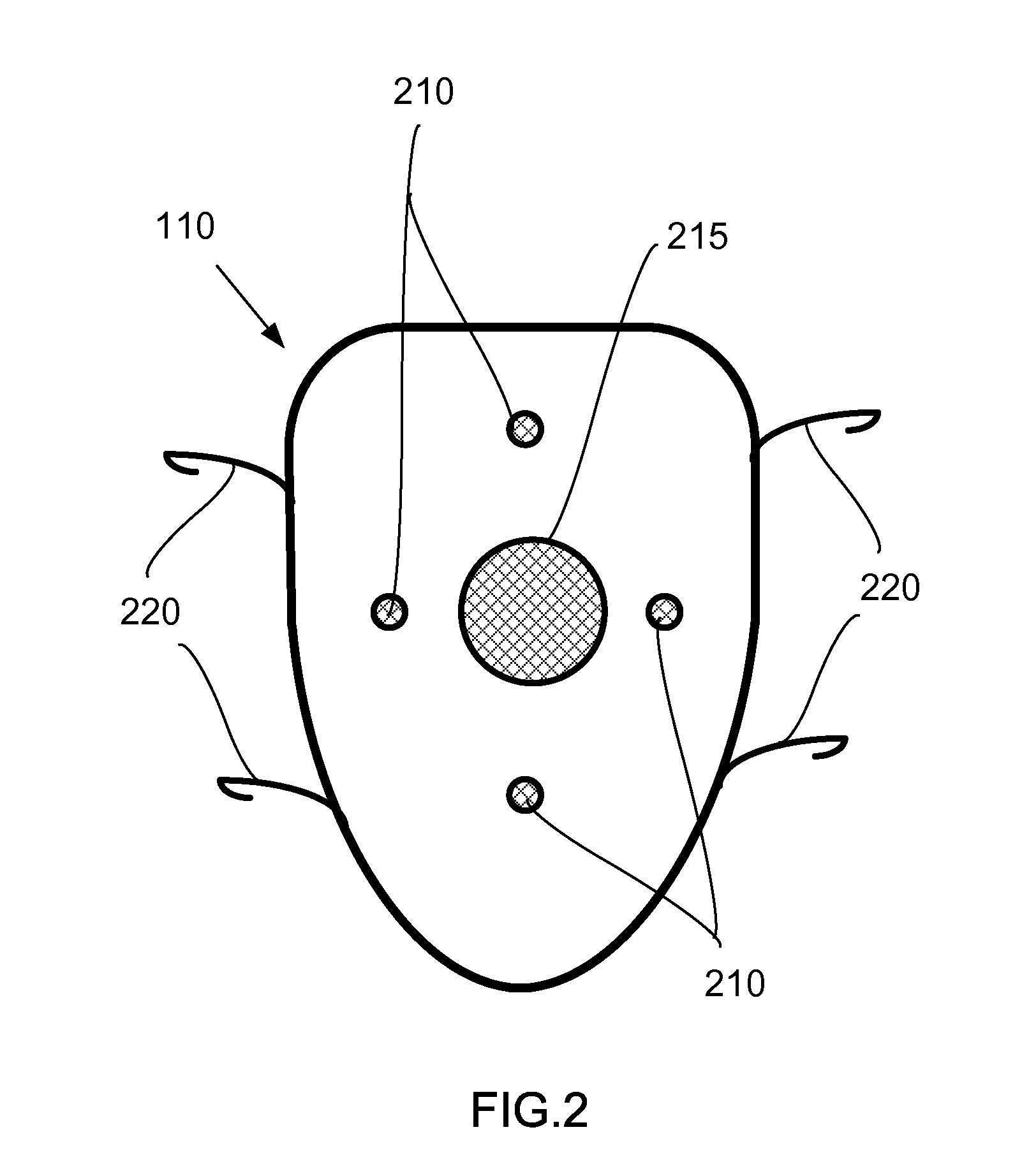Intra-Oral Balance Device Based on Palatal Stimulation
a technology of intraoral balance and palatal stimulation, which is applied in the field of intraoral balance devices based on palatal stimulation, can solve the problems of inability to fully compensate for lost vestibular function, inability to achieve full adaptation process, and serious problem of vestibular imbalance, etc., and achieves the effect of avoiding abrasion, avoiding abrasion, and accurate detection of head acceleration
- Summary
- Abstract
- Description
- Claims
- Application Information
AI Technical Summary
Benefits of technology
Problems solved by technology
Method used
Image
Examples
example 1
Four-Stimulator Configuration
[0037]A preferred embodiment, shown in FIG. 2, has a four-stimulator configuration that facilitates a compact and energy-efficient implementation of the electronic system while allowing presentation of the direction as well as the range of head movement using electrotactile stimulation. The sensory feedback regarding head movement is represented by small electrical pulse trains delivered through the stimulators. The range information is coded into the waveform parameters of the stimuli that can be perceived as having varying sensory characteristics. Specifically, frequency encoding is used to indicate the magnitude of the movement. The implementation allows the entire device to be powered by a mini battery, such as a coin battery, while generating adequate intensities for strong and comfortable sensations on the palate.
[0038]The electronic system is assembled into a mini circuit board that is embedded in a dental retainer. In this example the dental reta...
example 2
Microcontroller-Based Electronic System
[0039]A preferred embodiment includes an electronic system (300) that has a microcontroller, an accelerometer chip, and a stimulation circuit, as shown in FIG. 3. The electronic system (300) is powered by a coin battery while generating adequate intensities for strong and comfortable sensations on the palate. The microcontroller has on-chip peripherals including digital IO, SPI / I2C interface, timers, and oscillators for sensor interfacing and timing control. The microcontroller is programmed to process data from the accelerometer, which indicates head movement, and controls the stimulators to deliver electrical pulses with adjustable waveform parameters. Use of surface-mount components allows compact integration of the microcontroller-based system onto a mini circuit board. This exemplary system includes wireless communication capability for remote control of the device from outside.
[0040]In other embodiments, the electronic system may be a pri...
example 3
Charge-Balanced Stimulation
[0041]The stimulation circuit (325) in this example provides charge-balanced stimulation in the form of voltage-controlled monophasic pulses with no net DC current. The stimulation circuit for one channel (one stimulator) is illustrated in FIG. 4. A control signal (445) from the control unit (315) causes switch S (430) to momentarily close for a short duration, for example, 50 micro-seconds, during which negative charge is injected into the stimulating electrode (210), forming a cathodic phase of the stimulus pulse. The switch S (430) is then opened, and capacitor C (435) gradually discharges through resistor R (420) reversing the current flow so that the charge injected in the previous phase is slowly withdrawn. This control sequence can be repeated to produce a number of stimulating pulses. The stimulation circuit has voltage conversion (410) that converts the voltage from the battery into a voltage preferred for palatal stimulation (about 15-30 Volts), ...
PUM
 Login to View More
Login to View More Abstract
Description
Claims
Application Information
 Login to View More
Login to View More - R&D
- Intellectual Property
- Life Sciences
- Materials
- Tech Scout
- Unparalleled Data Quality
- Higher Quality Content
- 60% Fewer Hallucinations
Browse by: Latest US Patents, China's latest patents, Technical Efficacy Thesaurus, Application Domain, Technology Topic, Popular Technical Reports.
© 2025 PatSnap. All rights reserved.Legal|Privacy policy|Modern Slavery Act Transparency Statement|Sitemap|About US| Contact US: help@patsnap.com



